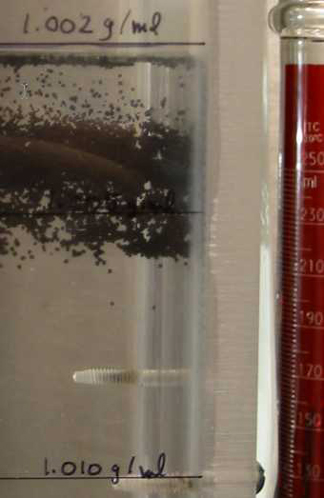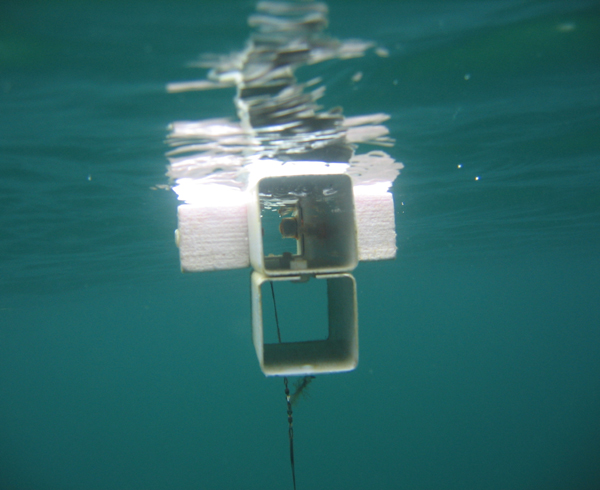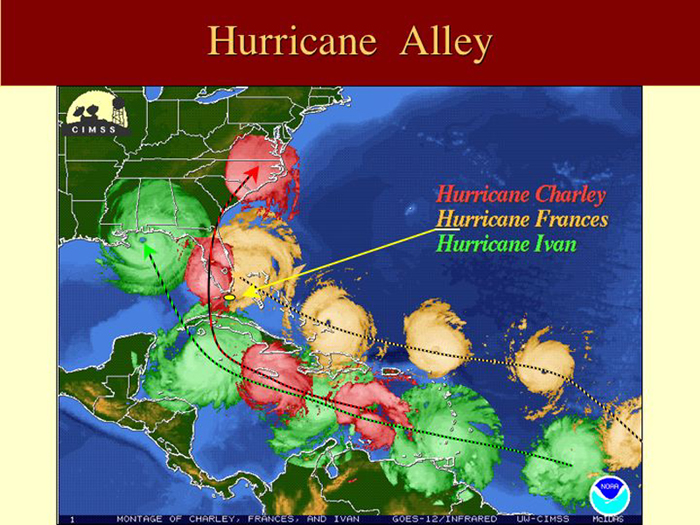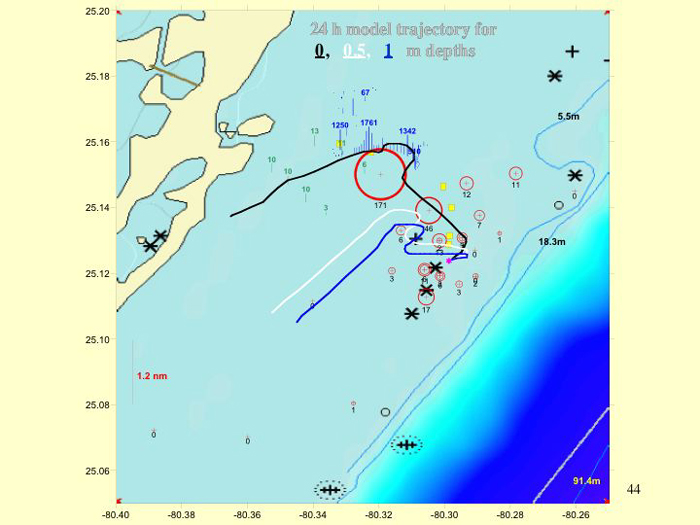|
Particle System to measure lateral mixingThe most difficult task in oceanography is to predict where water, and the things floating in water, will go. This applies to pollutants, oil spills, fish eggs and larvae, and many other things. My colleague, Chris Taggart, had a brilliant idea: anchor a number of magnets throughout the ocean and then release large numbers of tiny particles that drift with the water and are captured by the magnetic collectors. The number of particles captured in each collector reflects the probability of transfer from the release location to the position of that collector - a direct measure of what ecologists call "connectivity".
(Left) Magnetically-attractive tracer particles in a density gradient. (Right) Moored Magnetic Collector floating in seawater. We tested the technique in the Florida keys in 2005, a year with so many hurricanes that we ended up proving that the system is so robust and simple that it can continue to work when ships and boats must hide.
(Above) Tracks of three hurricanes that passed through the Florida Keys during our 2005 fieldwork.
(Above) Results from the 2005 Florida experiment, designed to track coral larvae. The vertical blue and green lines indicate numbers of particles captured by labor-intensive net tows performed during the 24 hours after release. The black, white and blue lines show the numerical model-predicted path of water near the surface (courtesy of Dr. Jerome Feichter). The red circles indicate numbers of particles captured at collector locations. The particle-based tracking system has now been applied in many locations, including Newfoundland, Northumberland Strait, and the Great lakes, and has been used to track lobster larvae and assess the transfer potential of invasive species. Ph.D. student Janelle Hrycik organized and ran most of these field experiments and is writing a thesis using their results, and working with Joel Chasse of DFO developing techniques to compare model predictions with experimental results.
|



